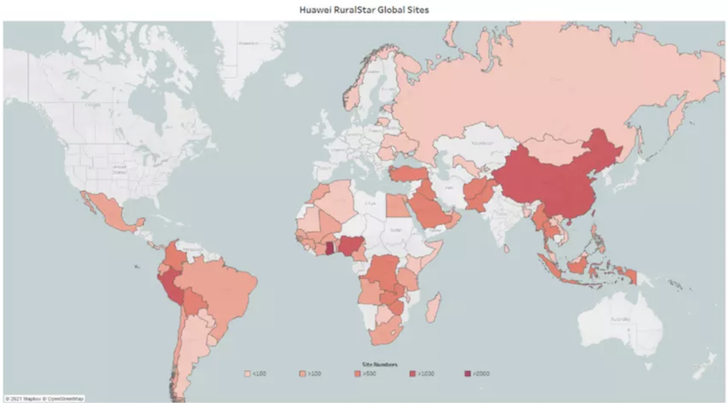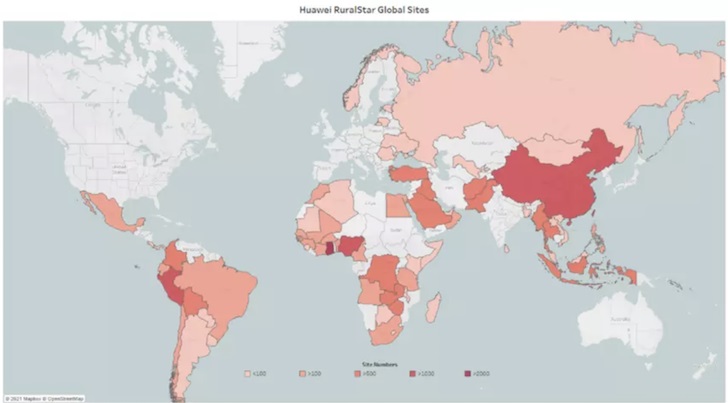Yin Haitao's Team Studied How Huawei Created a New Type of Cell Site Tower Optimized for Rural Areas. 2022-08-31
The World Economic Forum launched the EDISON Alliance to mobilize a global movement that prioritizes digital inclusion through cross-sector action. The 1 Billion Lives Challenge brings commitments from governments, companies and organizations to improve 1 billion lives globally through affordable and accessible digital solutions across health, education, and finance by 2025.
Huawei has made a new commitment to the World Economic Forum's EDISON Alliance:
Huawei is working with telecommunication companies and financial institutions in emerging markets to improve access to digital financial services. The company has already impacted the lives of 380 million people by providing innovative mobile finance solutions across money transfers, micro loans and remittances. It aims to impact an additional 120 million lives in Africa, Asia Pacific, Latin America and the Middle East by 2025. Huawei is also committed to enhance digital access, skills and literacy for 500,000 students and teachers by 2025 through its flagship TECH4ALL initiative, which includes the Connecting Schools, Skills on the Wheels, and Empowering the Unempowered programmes.
Here is a project initiated by Huawei, the Forum's business partner, which is pushing connectivity as a vital lever to realize the Sustainable Development Goals.
Huawei’s Rural Stars
Building a site for a cell phone tower costs about US $175,000 on average, and leasing costs can push the total expense as high as US $1 million. Costs can be 18% higher in rural areas and 35% higher in remote locations than they are in cities, while the revenue operators earn in those areas can be up to 90% lower.
This explains why so many parts of the United States – and the world – remain cut off from the internet.
Recently a group of students from Cornell and Shanghai Jiao Tong Universities studied how Huawei created a new type of cell site tower optimized for rural areas. Dubbed RuralStar, its goal was to lower installation costs, giving telecom operators a quicker return on their investment.
To save on construction costs, engineers initially built the cell towers out of wood. They also lowered the height of the tower from 164 feet to just 19 feet, greatly reducing costs and creating more flexibility on where the towers could be located.
Engineers also experimented with different ways to supply each site with electric power. Using solar panels saved operators money by reducing the amount of diesel fuel they had to buy for electric generators. It also cut labor costs, since technicians didn’t have to re-fuel the cell sites quite so often.
 Geographic Distribution of Huawei’s Existing Rural Stars
Geographic Distribution of Huawei’s Existing Rural Stars
These innovations helped lower the capital cost of building a cellular base station from $330,000 to less than $15,000. MTN Ghana, the telecom operator that piloted RuralStar, saw a return on its investment in just 30 months.
At last, providing poor rural areas with a high-speed internet connection had became economically viable.
Since then, more than 400 of these sites have been deployed across Ghana, serving 900,000 people there. In total, it is being used in about 60 countries, connecting more than 50 million people to the internet.
Authors:
Haitao Yin is Professor of Economics at the Antai College of Economics and Management at Shanghai Jiao Tong University.
Chris Marquis is the Sinyi Professor of Chinese Management at the University of Cambridge and formerly Samuel C. Johnson Professor of Global Sustainable Enterprise at Cornell University.
Original Link: https://www.weforum.org/partners/live-updates/wef-partners-driving-digital-inclusion#huawei-s-rural-stars






